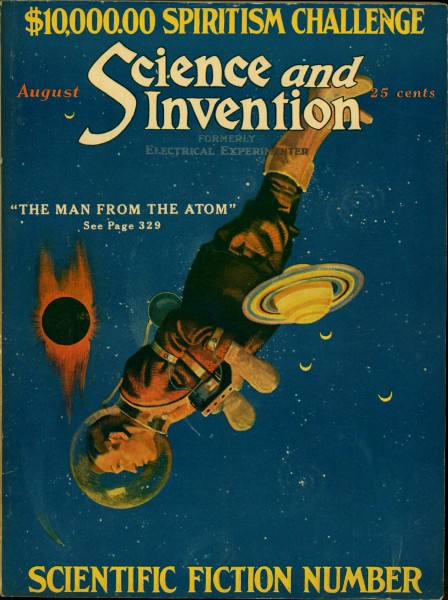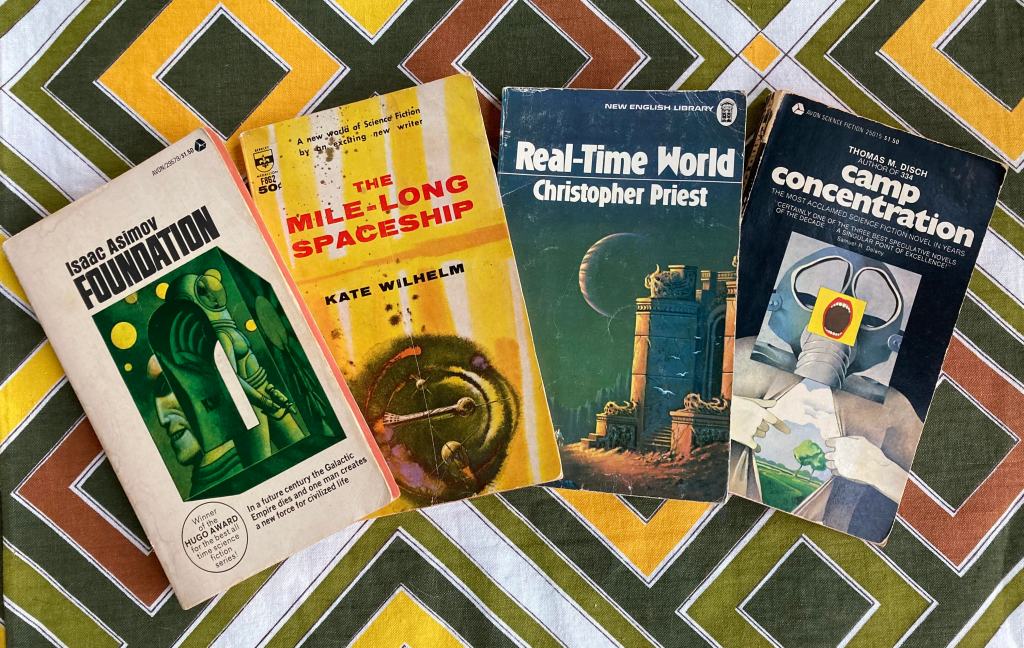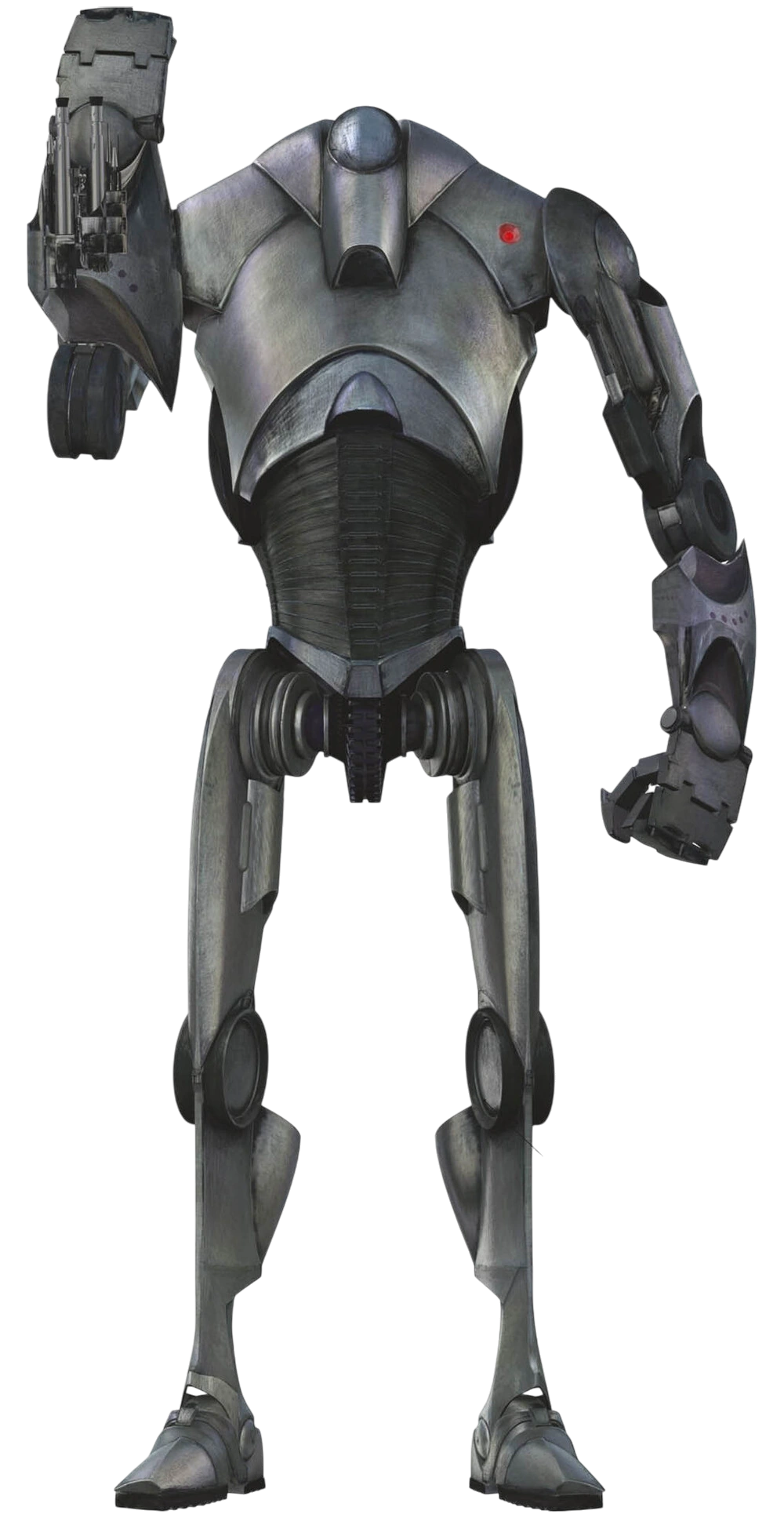“The Man from the Atom” by G. Peyton Wertenbaker was first published in the August 1923 issue of Science and Invention before being reprinted in the first issue of Amazing Stories. All the stories in the famous April 1926 issue of Amazing Stories were reprints. However, Wertenbaker has the honor of having the first original science fiction story, “The Coming of the Ice,” published in Amazing Stories, in the June 1926 issue.

Today I’ve been meditating on the idea of science fiction before science fiction was a concept with a label. People who love to read what we now call science fiction back in April 1926 didn’t know they were science fiction fans because the term didn’t exist. Hugo Gernsback was trying to get people to call it scientifiction, a word hard to say. Putting the names “H. G. Wells,” “Jules Verne,” and “Edgar Allen Poe” on the cover in large red letters was the perfect bait for readers who hankered after what we now call science fiction. Although they misspelled Poe’s middle name.
I’ve always assumed readers who bought the first issue of Amazing Stories discovered the kind of fiction they like by reading magazines and newspapers, including pulps. But checking my database I found 108 titles now considered science ficton (or fantastic) published from 1900-1925. But that brings up another question.
How many people had access to bookstores before 1926? I don’t think paperbacks as we know them existed back then. What percentage of Americans were readers? I just finished reading Chasing the Last Laugh: How Mark Twin Escaped Debt and Disgrace with a Round-the-World Comedy Tour by Richard Zacks. It focuses on the years 1893-1895 and discusses book selling. Publishers sold a significant percentage of Twain’s books via door-to-door salesmen. That suggests bookstores were not common.
My guess is would-be science fiction fans mostly read magazines and newspapers. This was an era when radio was becoming popular, but it wasn’t widely adopted yet. That meant most people got their information about the world from newspapers and magazines.
What did people think of “The Man from the Atom?” By today’s standard it’s both stupid and silly. A guy named Kirby has a friend, Professor Martyn, who is an inventor. Kirby enjoys volunteering to be an experimental subject for the professor’s experiments. In this story he’s invited over to test a machine that can do what Alice in Wonderland experienced when eating the food that made her bigger or smaller. Professor Martyn wants to use the device to explore the stars and atoms.
Wertenbaker was likely inspired by The Girl in the Golden Atom by Ray Cummings, which was serialized in All-Story Magazine in 1919. And Cummings was probably inspired by The Diamond Lens (1858) by Fitz james O’Brien and The Time Machine (1895) by H. G. Wells. And maybe young readers of Amazing Stories had already read those stories. I don’t know if any science fiction story is ever completely original. There are always stories that inspired that story, and if the writer is good, their story inspires future science fiction stories.
Kirby is given a space suit to provide oxygen and protect him from heat and cold. He then presses the button to grow larger, and he expands and expands. First, he steps off the earth, then out of the solar system, and then out of the Milky Way, but that’s not said explicitly. That’s because Edwin Hubble was still proving the existence of galaxies in the 1920s and the nature of The Milky Way.
Like many other stories, Kirby grows until he sees our universe as an atom among many, and then expands until he emerges into the water of another world. He realizes that he could never go back to Earth, and for two reasons. First, he couldn’t pick out the atom that was our universe, and two because expanding evidently meant time speeded up, and he figures he was millions of years into the future.
Ultimately, I liked “The Man from the Atom” even though it’s absolute horseshit. It’s just so damn imaginative for 1926. As the hippies use to say, “‘That’s far out, man!” And what kid hasn’t imagined the solar system as an atom?
Of course, I’m curious if readers back then believed any of this story was possible or scientific? Our knowledge of cosmology and subatomic physics in 1926 wasn’t very much. Wertenbaker was savvy enough to give Kirby a space suit. And he figured expanding meant speeding up time. Kirby had to grow much faster than light.
In the July issue, Gernsback wrote “Fiction Versus Facts” and quotes Wertenbaker. He contrasts scientifiction with “sex-type” literature, which I assume he means stories about romance, and says, “Scientifiction goes out into the remote vistas of the universe, where there is still mystery and so still beauty. For that reason, scientifiction seems to me to be the true literature of the future.” Evidently, right from the beginning readers of Amazing Stories, attracted readers of proto-science fiction that were true believers in human potential.

James Wallace Harris, 5/1/24







